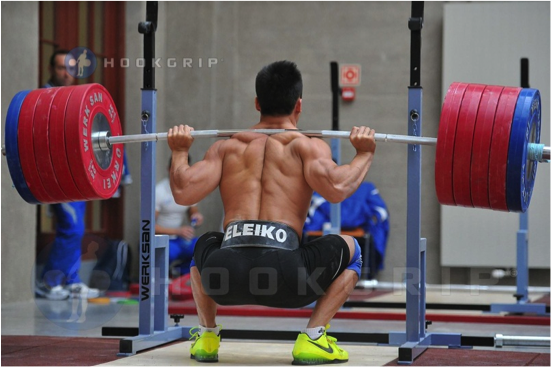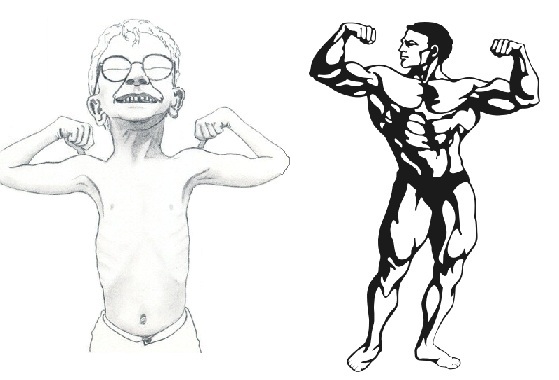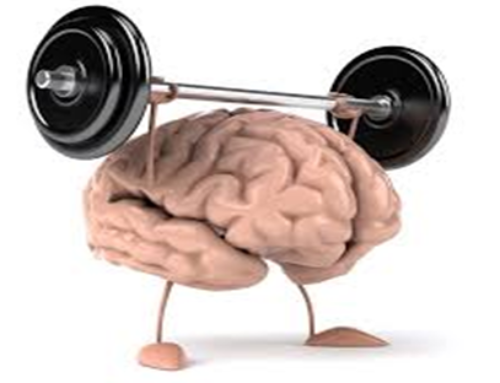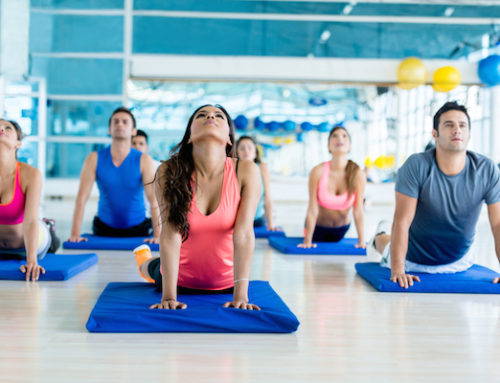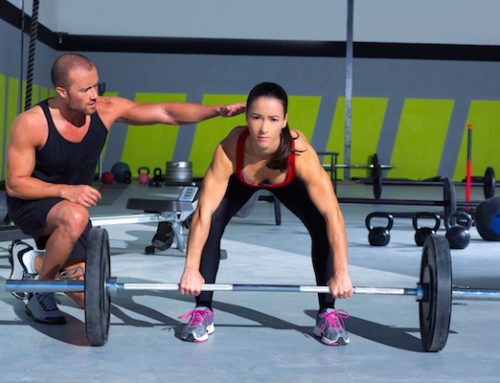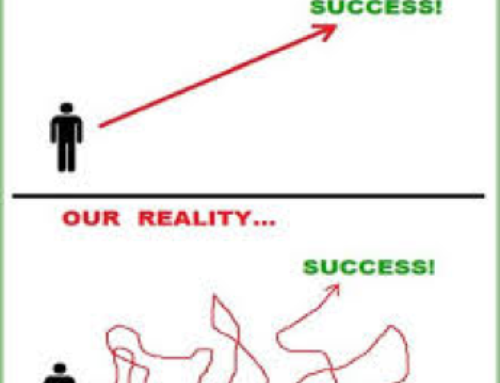Below is a summary of the major adaptations to training, all of which encompass different benefits and often for different purposes. Obviously, an Olympic Shot-Putter would not train the exact same way as a long distance runner, nor would a bodybuilding contestant train like a ballerina as each has a different training stimulus required for each different sport. Here are the major adaptations with a brief description on each. Keep in mind, unless you are specifically focused on one type of fitness conditioning for a specific purpose (like sport or competition) then we aim to achieve as many of these as possible throughout our training journey, although not necessarily at the same time.
Cardiovascular Endurance:
-
- Definition – By CV endurance we refer to the body’s ability to provide energy to the muscles at a rate that can match demand, i.e. supply and demand. The mechanisms to do this are many, and a non-exhaustive list of physiological benefits and adaptations that will occur in your body are detailed in the CV endurance webinar on our website. The term ‘General Fitness’ is often thrown around, though it is not very specific. ‘Stamina’ is slightly more specific though there is a lot more to fitness that just being able to last longer.
- Benefits – The physiological adaptations underpinning increases in CV endurance all add up to make you fitter, have better endurance (last longer) and be able to perform at a much higher intensity, which is simply supplying oxygen to our muscles at a faster rate for a much higher demand on energy. Being fitter will dramatically improve your quality of life from areas such as fun sports and playing with the kids, to day to day tasks like climbing the set of stairs at work with more ease.
- Strength:
- Definition – Strength can be categorised into both muscular strength (which is localised to that one specific area of the body and a specific action/motion) as well as overall performance strength. Muscular strength is defined by the ability of your body’s muscle to generate force in a short period of time. Examples of great muscle strength would be a person very strong in an arm-wrestle (very localised and specific), though this doesn’t necessarily mean this person can move a set of drawers or something practical with any ease, as this is a more overall performance-based strength. Great examples of this are the female gymnasts or even Cirque du Soleil performers who are tiny with very slim builds (not muscly at all) yet can hold their entire bodyweight on one arm in a handstand and press their whole weight on that one arm. That is very functional overall strength. Training for muscular strength consists of lesser repetitions and higher loads (more weight) often using resistance training and a very ‘anaerobic’ energy source is used.
- Benefits – Strength training helps to improve not only your ability to do daily tasks, like picking up your child or climbing a fence, but also to improve your quality of life by strengthening your bones (osteoporosis risk), improving the strength of your connective tissue (tendons, ligaments etc) and decreasing risk of falls due to weakness or imbalance. Strength training has also been shown to be one of the best methods to regulate blood glucose for diabetics. Strength training should be a part of everyones training program.
- Muscle Hypertrophy:
- Definition – This refers to growth of muscle tissue, most commonly referred to as muscle mass or size. The addition of quality muscle is a very valuable thing for everyone to have for it not only increases metabolism (burning more calories) but it is the functional part of your body that gives you the strength and performance to do daily tasks, not to mention a lean and slender physique. And by ‘quality’ muscle we mean adding lean muscle mass without the deposits of fatty tissue within the muscle as seen in most ‘bulky’ individuals and very evident in fatty cuts of beef, you know, the fatty white bits within the red muscle of the steak.
- Benefits – It is the high metabolic cost of muscle that makes it a great tool for fat loss. Muscle is the only thing other than your skeleton that provides you with the ‘ideal shape’ that we have all come to know and idolise, as fat is the only other variable and it takes us away from the ideal shape by being bulky and distorting the human form. Therefore, muscle becomes even more important when aesthetic changes are your goal.
- Weight loss/Fat loss:
- Definition – When people say ‘weight loss’ what are they actually referring to? Some people don’t care what they lose so long as the scales show a lower number the next time they step on them. This is foolish and counterproductive to long term goals as the tissue ‘lost’ could be muscle, fat, water or stored carbohydrates. The only one of these we want to lose is fat. The others are all important to your optimum functioning. For instance, it is quite common to see short-term diets with either extremely low calories or next to no nutrients where the ‘fantastic’ weight-loss results that they see in the first few weeks (and only in the short term) is almost all due to muscle loss, as this is the more energy costly tissue and the one the body will get rid of first when caloric intake is too low. This in turn kills our long term chance of losing more weight and we end off stacking on the weight a lot faster. In order for us to lose weight correctly, and by this I obviously mean losing fat, is to burn more calories than we consume while conserving, or if not, improving our muscle mass.
- Benefits – The benefits to ‘healthy’ weight loss are innumerable. From increases in confidence and feelings of self-esteem, better reactions and treatment from others (whether we like it or not people do discriminate on how they treat people based on how much they like them, which is effected by looks) to a better quality of life from much easier movement and agility/mobility as well as all the health improvements that come with a lower body fat percentage. These include decreased risk of cardiovascular disease or stroke, lower cholesterol, decreased blood pressure, decreased risk of diabetes and obviously less stress on the joints and ligaments of the body because less weight is being crushed though them with every movement or step.
- Speed / Agility:
- Definition – Speed refers to quickness and generally over short periods. To move quick or run fast/move fast is considered typical for Speed. Agility is very similar though often includes changes in speed and direction. I.e. a quick change in acceleration like that regularly required in sports is what we call agility. ‘Power’ is also categorised in this area of adaptation though is actually a combination of two adaptation types; namely strength and speed. So, Power = Strength x Speed. Where speed alone is like a quarter-mile dragstar, agility is like a speedy Porsche that zips in and out, and power is like combining the strength of a truck with the speed of a Porsche – raceway material!
- Benefits – The benefits of speed and agility and especially power are usually pertained more toward the sporting field and pertinent to athletes, or where specific conditioning in required for a specific activity.
- Flexibility:
- Definition – Also known as suppleness, or mobility, flexibility is the body’s ability to articulate its joints through larger ranges of motion. Although there is often a trade-off between strength and flexibility, in that those who are considered big and strong have less flexibility than those who are petite and flexible, and those that are considered hyper-flexible are generally weaker as a result of ‘stretched muscles’, though this need not be the case if both flexibility and strength are trained together.
- Benefits – Efficiency of motion is a major plus from flexibility. For example, if one’s hip joints are more flexible that another’s then they’ll have more range of motion in their legs and hips and will be able to move, squat, run, sit and do simple things like get into and out of the car or put their socks and shoes on much more easily. Likewise, if someone has more mobility through their spine than someone else who is quite stiff through the thorax in bending and twisting (rotation) then they will be able to do things like twist right around in the car when reversing to see out the back window with much more ease. If all areas of the body are adequately strong as well as flexible then your entire life is made easier because every single movement is done with greater flow, it is more fluent and with less effort, less resistance.
- Skill:
- Definition – Skill is very much a coordination thing. It is very neural, meaning the sequencing of nerve recruitment becomes more efficient and effective, which is also a training effect over time. This plays a big part in what people call ‘functional’ training. We say functional because it entails not just that the body has strong muscles or that it can bend through large ranges of motions but more importantly that it can be done with control and precision. This is what makes it functional, to the things we do on a daily basis and in specific relation to any particular motions we’re training for. An example would be when someone injures their knee or ankle and the muscles and tendons around that joint are damaged. What generally happens in that not only does the strength decrease (because of the injury and the inactivity during the recovery period) but the joint loses its sensory information known as proprioception. Proprioception is the sensory information sent to and from the brain telling the muscles what to do, when to turn on and in what sequence to fire. You’ll experience this very evidently if you were to stand on one leg and then try to balance with your eyes closed. You would feel minor twitches in your foot and ankle as the different muscles around the joint fire on and off to keep you upright. These quick twitches happen far too fast for you to consciously think “oh I’m falling to the left so I’ll contract my right Peroneus Brevis muscle to pull me back into alignment”. No! You simply feel these sensations going on as your subconscious communicates between your muscles and joints and your central nervous system. The sensory receptors in your muscles literally send signals as to when the muscle is stretched, how much it is stretched and how much force is going through it. Then the nervous system can react. Now, back to the ankle or knee injury example, when these sensory receptors are damaged the information flow between the brain and the muscles is vastly impeded. Therefore, the joint is now not only weaker but also has less proprioception and balance in movement and much more prone to re-Injury. Hence why people who injure a joint are more susceptible to do it again. The only way we can properly rehabilitate is to get the strength back so the muscles around the joint are strong AND re-train the proprioceptors through skills training so the muscles around the joint don’t just turn on, but turn on in the right sequence, otherwise there is only more undue stress on the joint.
- Benefits – Skill is probably one of the most pertinent factors to performance improvement than any other facet of training alone. Of course you want to train all facets relevant to your goals but to emphasise the importance of skill is necessary here. Body awareness is also a great benefit to skill training and one that is hard to describe, as it really ties into balance and the control of your body and movements. It also has a large effect on posture and the functioning of the body as we mentioned. As an example, just think of how many elderly people (as well as those quite young) have injured themselves as a result of some fall or stumble? Now what are the two biggest problems leading to falls? 1) Strength and 2) Balance, or proprioception, where a lack of reflexes or dull/slow reflexes has resulted in the person stumbling before the body could tell the responsible muscles what to do and how to do it (or they’re just not strong enough to do it). Something a fit and skilful person could do while they were drunk, half asleep and blindfolded!
Toning:
Another point worth mentioning is on toning.
In my time I have come to hear a lot of personal definitions of what toning is exactly, and it seems to be slightly different for everyone. There is actually a technical definition for toning but for the most part and for everyday purposes it’s not what most people refer to when they say “I’d like to tone up”. Generally, most people describe this request as looking “more defined”, or “firmer” or “just not as floppy!” All of these definitions are fine and make sense after I question and probe a little further, though in reality what these general requests are all really asking for is a combination of points 3 and 4, that is, both muscle gain and fat Loss together. It is when the layer of fat that lies over the muscle and under the skin (subcutaneous fat) becomes thin enough that you start to make out the shape of the muscle under the skin. This is exactly what needs to happen for ‘definition’ and exactly what happens when you combine fat loss (thinning of the fat layer) with muscle building (‘coming out’ of the muscle beneath).
As I mentioned before, there is a slightly more technical definition of toning and it comes from the Latin word ‘Tonus’, meaning constant ‘tension’ in the muscle. It is defined as the ‘continuous and passive partial contraction of the muscles’, as there is always a slight amount of activity going on in a muscle, even a resting muscle. This produces a certain amount of constant tension, and while a muscle with very little tone seems to be quite flaccid, a muscle with high tension (tonus) seems to be extremely firm even when at rest. This can possibly be what some people refer to as ‘feeling firmer’ as that’s exactly what the muscle is – firmer, except these people often point to the fat on their body and that has absolutely nothing to do with ‘Tonus’.
As mentioned above, each type of physical and physiological adaptation requires slightly different approaches and responds very differently, especially from a time-frame perspective. For example, it takes a lot longer for someone to develop noticeable muscle mass gains, if its lean muscle, than it does for them to notice marked improvements in their fitness, or someone aiming to lose weight will notice large gains in strength long before large losses in body fat, as some of these parameters just take a lot longer than others to respond, depending on how much conditioning or adaptation the body needs to go through internally before the results are noticed externally.
Conan Fitness

